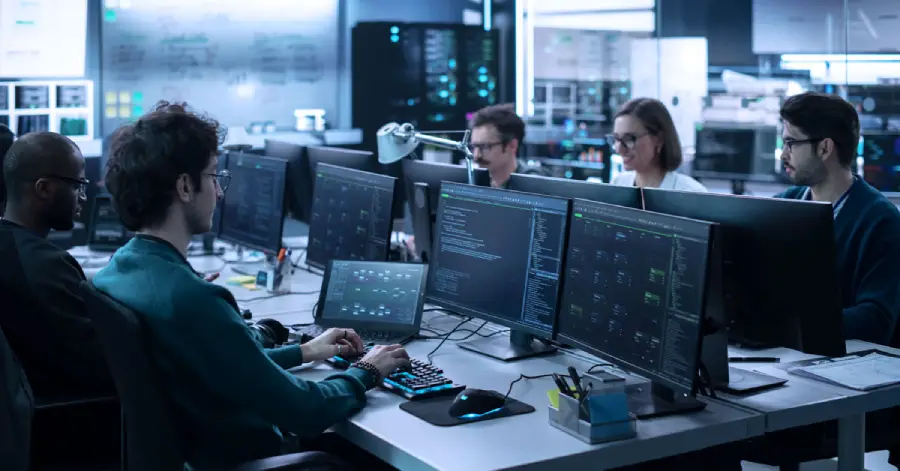Inclusive Learning – Making the Case for Web Accessibility Training For EdTech
- Published on: May 16, 2024
- |
- Updated on: June 18, 2024
- |
- Reading Time: 6 mins
- |
-
Views
- |
Accessibility Training: What it Means to EdTech Development
To sensitize edtech developers
To create awareness about legal requirements
To inform them about available tools
Benefits of Prioritizing Accessibility in Product Development
Build Innovation
Enhanced user experience
Expand Market Reach
Legal Compliance
Accessibility Training Playbook: What To Include
Key Principles of Web Accessibility
Overview of Relevant Laws
WCAG Guidelines
Planning
Designing
Content Creation and Publishing
Development
Testing and Quality Assurance
Deployment
Accessibility Decay
FAQs
The role of accessibility in web development and design has become increasingly critical in recent years. As early as 2015, accessibility lawsuits against educational institutions underscored the significance of ensuring equitable access to online resources for all users, regardless of their abilities. Today, ensuring accessibility is not only a matter of ethical responsibility but also a legal requirement in many jurisdictions.
However, a considerable number of edtech web developers and designers have a vague understanding of accessibility. For instance, they fail to grasp the diverse needs of users with varying disabilities including cognitive, auditory, motor, and visual. Balancing the compatibility of educational content which often includes multimedia elements with accessibility is complicated. What’s more? Compatibility and consistency of assistive technologies like screen readers and voice recognition software across devices poses another challenge. The need to fulfill these requirements while retaining the visual appeal of the product has only exacerbated the issue.
So in the light of the need to drive innovation while complying with accessibility norms, how should edtech companies drive business growth? Start with web accessibility training for all in the software development lifecycle.
Accessibility Training: What it Means to EdTech Development
To sensitize edtech developers
Often, developers retrofit websites if the browsers disallow something. In such a scenario, it is unlikely for them to understand that making their website inclusive is not only beneficial but necessary. Web accessibility training for developers moves the conversation from coding to coding with compassion. It shifts the perspective from designing to designing with sustainability and purpose. It sensitizes developers towards user experiences and motivates them to create solutions that are both engaging and accessible.
To create awareness about legal requirements
Web accessibility holds legal significance in several countries. The American Disabilities Act (ADA) mandates both public and business entities to make their Information and Communication Technology (ICT) accessible to people with disabilities. Web owners are held liable under numerous acts like Section 508, EN 301 549, Australia’s DDA, Japan’s Act for Eliminating Discrimination, and the European Accessibility Act among others. Comprehensive accessibility training assists developers and designers in adhering to specific laws governing accessibility.
To inform them about available tools
Accessibility training equips developers with the necessary tools and resources to support more inclusive designs. Tools like screen readers, color contrast checkers, and keyboard navigation checkers assist developers in creating more accessible products. On the other hand, tools like Accessible Rich Internet Applications (ARIA) Authoring Tools and accessibility validators provide guidelines and resources that enhance the accessibility of the products and make them more functional.
Benefits of Prioritizing Accessibility in Product Development
Understanding and implementing accessibility principles inculcates a deeper knowledge of user experience and design fundamentals. By embracing accessibility, developers and designers can hone their skills, refine their techniques, and ultimately emerge as more proficient practitioners of edtech products. Here’s how accessibility training empowers everyone in the software development process to succeed.
Build Innovation
Accessibility training encourages developers and designers to think creatively and innovatively about how to make edtech products more inclusive. Consider an edtech team developing mathematics education software. To ensure accessibility for all learners, the team collaborates to integrate gamified elements, customizable difficulty levels, and audio cues to make learning more engaging. This not only improves engagement but also accommodates different learning styles and abilities.
Enhanced user experience
People with disabilities often face challenges when accessing a website that is not compliant with accessibility. This can lead to frustration and abandonment. On the contrary, clear navigation, readable content, and intuitive interfaces can provide a seamless navigation experience leading to higher levels of engagement and satisfaction, even for those without disabilities.
Expand Market Reach
By designing accessible edtech products, developers and designers can reach a broader audience, including individuals with disabilities. This can lead to increased adoption and usage of their platforms, ultimately expanding their market reach and driving business growth.
Legal Compliance
The cost of fighting an accessibility lawsuit runs high. From a legal standpoint, accessibility compliance can prevent potential litigations and ensure that the websites comply with local and international accessibility regulations.
Accessibility Training Playbook: What To Include
Education technology is evolving rapidly. Therefore, companies must ensure that the training and resource materials remain accessible in the future. The Web Content Accessibility Guidelines provide some direction on creating accessible web solutions. Here’s what you should include:
Key Principles of Web Accessibility
The Web Content Accessibility Guidelines are built around 4 principles known by the acronym POUR. It underlines a methodological way of approaching accessibility by breaking it into the following aspects: Perceivable, Operable, Understandable, and Recognizable. Simply, by following these guidelines, developers can identify multiple areas for accessibility inclusion.
Overview of Relevant Laws
Several laws govern web accessibility in different jurisdictions. The training program must sensitize developers and designers about the relevant laws to create awareness, understand the scope of penalties, and avoid potential lawsuits.
WCAG Guidelines
The WCAG guidelines encompass several versions that serve as an update to the previous one, the latest featuring WCAG 2.2. Based on each of the success criteria, websites are graded as A, AA, and AAA, showcasing how accessible a website is.
Once a general overview has been established, edtech companies can dive into training individuals at different stages of their educational technology software development.
Planning
Employees at this must be trained to focus on: Who is the target audience and what are their potential barriers? What are the assistive technologies available for that purpose? What are the accessibility guidelines and standards for the concerned group?
Designing
Designers must be trained to incorporate Principles Of Universal Design for maximum usability. They must be familiarized with WCAG 2.1 or 2.2 guidelines to create accessible user interfaces. Is the color contrast significant? Should there be alternate formats of content like multilingual transcripts for audio and video content? How can the data be presented in a more perceivable format?
Content Creation and Publishing
Web accessibility training for content development includes inculcating the ability to structure content through HTML and CSS. Additionally, the role requires the creation of captions and transcripts for audio and video content with SEO expertise.
Development
Developers must have an understanding of WCAG 2.0 guidelines and how they apply to web development and coding. Developers must be trained to implement accessible coding practices to ensure compatibility with assistive technologies. How to use semantic HTML structure to enhance screen reader compatibility and navigation. How do we provide text alternatives to non-text content like images and media?
Testing and Quality Assurance
What tools and methods can be used for web accessibility testing? Is automated testing enough or should we deploy manual testing? How to conduct accessibility testing using assistive technologies like screen readers, and keyboard-only navigation? How should we conduct an accessibility test with people with disabilities? How do we collect feedback? At this stage, employees must be cognizant of the accessibility guidelines governing the product to verify compliance.
Deployment
At this stage, employees must be trained to create supportive documentation and resources that address accessibility features and assistive technology compatibility.
Accessibility Decay
In addition to training employees to create accessible edtech solutions, companies must also inculcate a sense of responsibility towards maintaining accessibility over time. Accessibility Decay which occurs due to content changes or software updates can be easily avoided with concurrent accessibility testing and remediation.
It must be noted that accessibility training is not an end solution in itself. As edtech offerings evolve, accessibility complexities will throw companies into a gray area marked by undefined territories. However, companies will benefit from having an employee base armed with the required knowledge and resources to foster dialogue and resolution.
At MagicEdtech, we assist you in building accessible edtech products all while optimizing the role of people at each stage of development. Contact us to learn how.
FAQs
Web accessibility training for edtech developers is crucial as it sensitizes them to the diverse needs of users with disabilities, encourages coding with compassion, and ensures compliance with legal requirements.
Not prioritizing web accessibility in edtech products can lead to potential lawsuits and penalties. Various laws such as the American Disabilities Act (ADA) mandate accessibility, emphasizing the importance of adhering to accessibility standards in educational technology software.
Common challenges faced by developers include understanding the diverse needs of users with disabilities, balancing compatibility with assistive technologies, and maintaining the visual appeal of educational technology products while ensuring accessibility.
Developers should be familiar with key principles and guidelines such as the Web Content Accessibility Guidelines (WCAG), which provide a structured approach to achieving accessibility across various aspects of web development.
A range of tools and resources are available to assist developers in creating more accessible edtech products, including screen readers, color contrast checkers, keyboard navigation checkers, and accessibility validators like Accessible Rich Internet Applications (ARIA) Authoring Tools.
Designers play a critical role in ensuring web accessibility for edtech products by incorporating the Principles of Universal Design, familiarizing themselves with WCAG guidelines, and considering factors such as color contrast and alternate formats for content.

Get In Touch
Reach out to our team with your question and our representatives will get back to you within 24 working hours.


